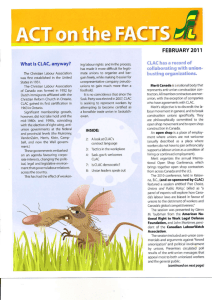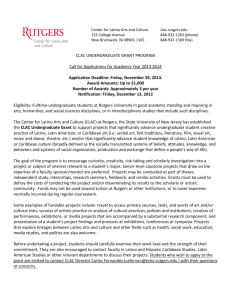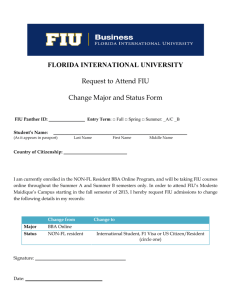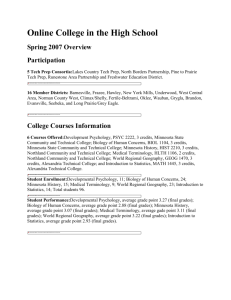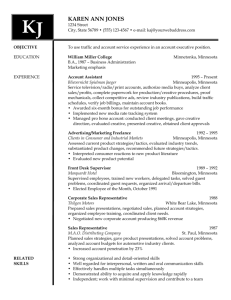The second challenge to high-level study of languages in
advertisement
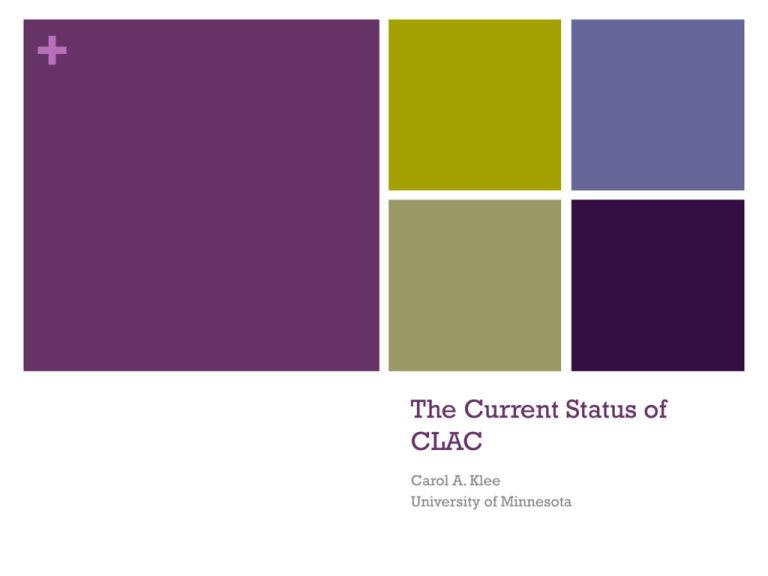
+ The Current Status of CLAC Carol A. Klee University of Minnesota + (Foreign) Languages Across the Curriculum (FLAC or LAC) Cultures and Languages Across the Curriculum (CLAC) Efforts began in the late 1980s following the strengthening of the world language requirement in the University of Minnesota’s College of Liberal Arts and in response to the question: a language requirement for what purpose? Implemented with funding from NEH and FIPSE in the 1990s but dwindled when funding ended + Primary goals of (F)LAC program University of Minnesota 1. Demonstrate to undergraduates the benefits of acquiring a second language, including deepened understanding of a discipline and broadened cultural perspectives; 2. Hone undergraduate students' analytic and critical abilities with regard to significant texts and sources in a second language; 3. Promote lifetime competency in a second language; 4. Provide opportunities and incentives for faculty to apply their second-language ability in the humanities or social science classroom. + Primary objectives of LxC at SUNYBinghamton LxC “is not a language-instruction program but rather a course-content enrichment program.” It provides “opportunities for students to make meaningful use of (and enhance)their comprehension skills in languages other than English [… and] increases students’ understanding of the global networks that shape all cultures.” How does CLAC work? (adapted from Diana Davis) + Type Minimum Lg Proficiency and Use Who Delivers Frequency of Meetings Academic Credit Examples Highly variable Non-FL fac No separate meetings No credit B-W, Earlham Empowered Highly variable Non-FL grad Ss, with non-FL fac 12-15 hrs/sem 0-1 credit: counts toward BU minor in Global Studies Binghamton U, UNC-Chapel Hill Modularized (FL trailer to non-FL class) Typically intermed-mid FL only Non-FL faculty or FL teaching assistant or FL faculty 1-2 hrs/week Partial (1-2 credits) Appalachian State, Auburn, Minnesota, Utah Wittenberg U, St. Olaf, U Conn Immersed (freestanding) Intermediatehigh or higher, FL only Non-FL faculty 3-4 hrs/week Full (3-4 credits): counts toward lg and non-lg rqmts Minnesota, Utah, Trinity U, BaldwinWallace Linked/Adju nct model Intermediatehigh, FL only Faculty (FL and FL-fluent non-FL) 3-4 hrs/week Full (3-4 credits): counts for lg rqmt U of Ottawa Dual-degree Endpoint: Advancedmid Bilingual faculty (CBLI → CLAC → full immersion abroad in work context) Better part of 810 semesters (including industrial internship) 90-120 credits (half or more taught in FL) of 120-150 required for degree U of Rhode Island, U Conn, Georgia Tech Infused + Challenges in the curricular development and delivery of CLAC Definition of the primary objectives of CLAC programs, taking into account specific institutional contexts Careful match between student language proficiency and program requirements Finding the appropriate balance between language learning and content learning Who should teach CLAC courses and what type of preparation should they receive? Importance of participation of applied linguists
